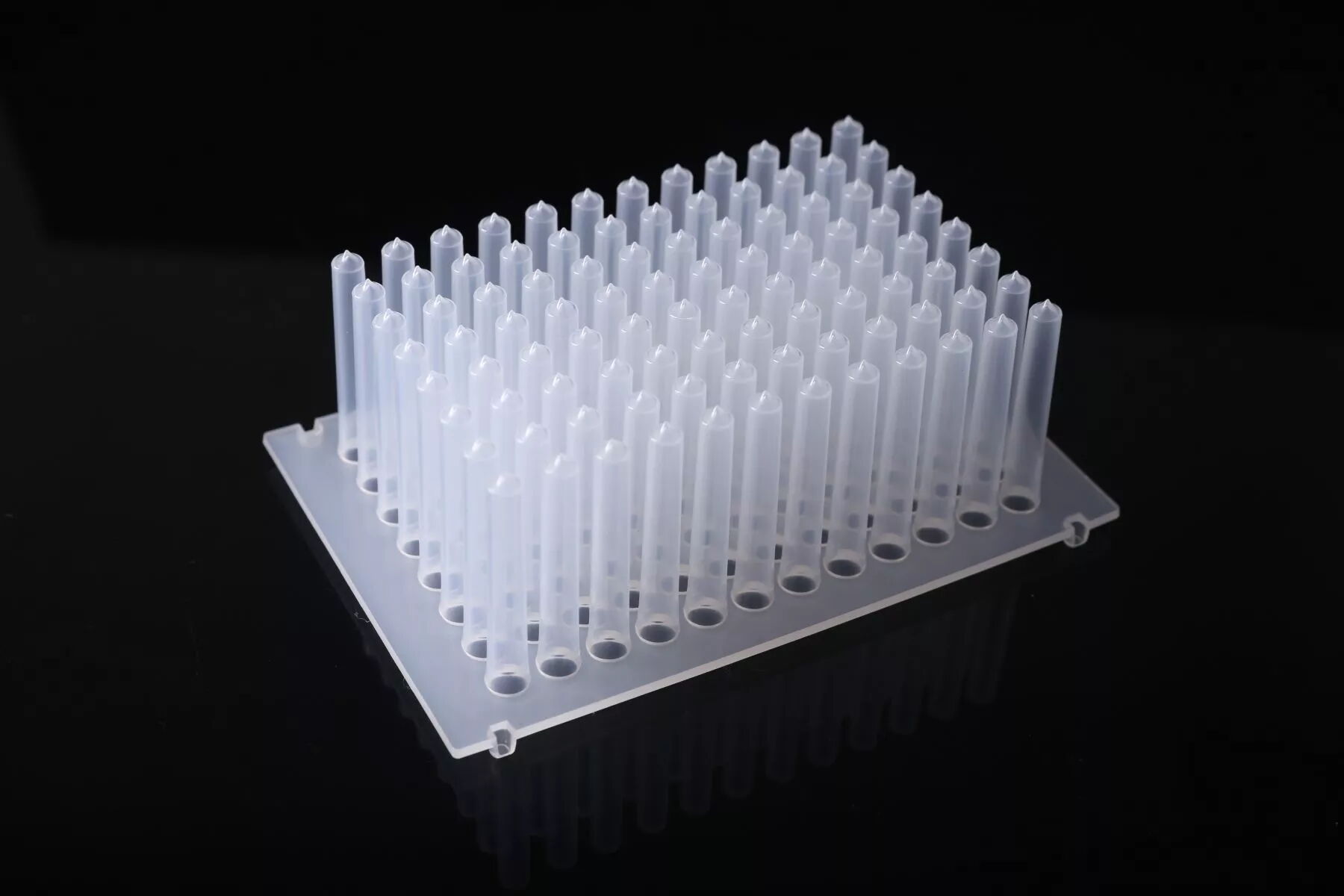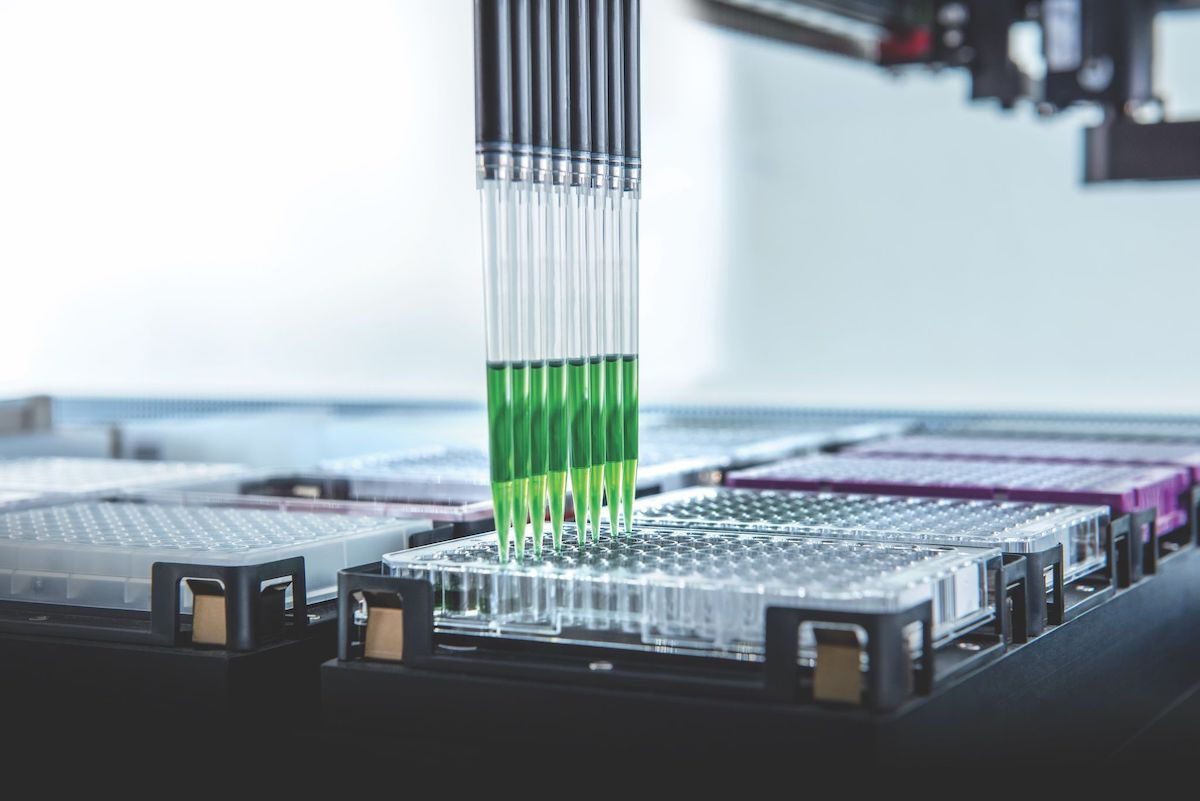How to Source High-Quality Laboratory Consumables
May 23, 2024
To achieve accurate and reproducible testing results, laboratories must maintain precision at every step of the workflow. This begins with properly trained staff who utilize their expertise and skills effectively. However, for staff to perform optimally, they need to be equipped with appropriate, high-quality laboratory consumables.
Whether in a university, a private testing provider, a biotechnology firm's research and development department, laboratories depend on consumables that meet high standards. Without reliable, high-quality consumables, results can become inaccurate and irreproducible.
In an era of supply shortages and disrupted procurement practices, ensuring the reliability of your laboratory consumables can be challenging. This guide will help you learn how to procure high-quality laboratory consumables that you can depend on for accurate testing.
Key Features of High-Quality Laboratory Consumables
01 Consistency
The foremost requirement for all consumables is unwavering consistency, with no variation between them. They must be free from visible flaws or imperfections and strictly adhere to precise dimensions, transparency, pigmentation, strength, weight, and volumes as specified in the product documentation.
Issues arising from inconsistent consumable sizes include:
(1) Multiwell plates may not fit within loading bays.
(2) Automation equipment may fail to function correctly.
(3) Incorrect seals between tips and pipettes can cause leakage and inaccurate volumes.
(4) Ill-fitting tips may fall off the pipette, leading to sample loss and potential contamination of other samples.
(5) Tips that are too tight can make it difficult for the operator to eject them from the pipette, potentially causing repetitive strain injuries.
02 Production Facilities
Select consumables manufactured by reputable companies that employ advanced production technologies. Important aspects to consider include:
(1) Laboratory Testing & Quality Control
Independent validation systems are crucial to ensure each batch of products meets the exact specifications. Look for suppliers who have quality control procedures that regulate dimensions, durability, purity, and sterility.
(2) Certification
Some manufacturers provide certifications of compliance, purity, and sterilization. While suppliers may not always provide these certificates directly, reputable suppliers will have validated these certifications as part of their quality management system assessments. Ensure the authenticity of all ISO, CE, and FDA certificates/registrations with the issuing certification bodies and competent authorities in the country of registration.
(3) Injection Moulding
A common issue in manufacturing polypropylene products is mould flashing, an excess of plastic that forms on the surface of moulded products. Flash-free tooling can be prohibitively expensive. Therefore, look for consumables produced with superfine moulding technology to ensure high-quality, flash-free products.
03 Durability
While consumables are often single-use items, their durability is crucial for many laboratory processes. Some applications require consumables that can endure centrifugal forces, exposure to chemicals, and temperature variations.
Thermal Resistance: Consumables subjected to high temperatures during thermocycling, autoclaving, or water baths must exhibit excellent thermal resistance. Poor-quality materials and poorly produced multiwell plates may warp, become distorted by robot grippers, or fail to fit correctly in robotic loading bays. Such plates may not withstand the fluctuating temperatures during thermocycling, leading to warping or adhesion issues with thermocyclers.
Centrifugation Resistance: High resistance to centrifugal forces is essential for centrifuge tubes and multiwell plates. Tubes with microcracks, chips, or poor designs may break under centrifugal force, releasing samples, droplets, and aerosols into the centrifuge bowl.
04 Purity
Preventing contamination is a major challenge in laboratories, particularly in PCR, molecular biology, forensic analysis, and handling infectious materials. Ensure consumables are certified contaminant-free to maintain accurate and reliable test results and research.
(1) Additive and Chemical-Free Consumables: Avoid consumables colored with non-organic dyes, which may contain chemicals like cadmium and chromium that interfere with results. Opt for consumables colored with organic dyes, free of heavy metals, especially important in trace analysis.
(2) DNA/RNase-Free: High purity is critical in PCR and cell biology due to the sensitivity of the polymerase chain reaction. Consumables should be certified DNase and RNase free. In sterile environments, consumables should also be free of ATP, bacterial DNA, and PCR inhibitors.
(3) Sterility: Ensure consumables are completely free of contaminants, including microorganisms like viruses, bacteria, fungi, and spores. Choose consumables sterilized with validated processes compliant with ISO 11137. Electron beam sterilization is a preferred method as it produces less oxidative damage to plastic products.
(4) Clean Room Technology: Contamination from small airborne particles during manufacturing can be avoided by purchasing consumables made in clean-room conditions. These environments feature HEPA filters and personnel in protective clothing, ensuring separation between manufacturing and packaging areas.
05 Raw Materials
Select consumables made from premium quality materials. For instance, pipette tips and plates should be made from Grade A virgin polypropylene to ensure a high-quality end product. Check for signs of aging on the surface of consumables, which can indicate lower quality raw materials.
Whether in a university, a private testing provider, a biotechnology firm's research and development department, laboratories depend on consumables that meet high standards. Without reliable, high-quality consumables, results can become inaccurate and irreproducible.
In an era of supply shortages and disrupted procurement practices, ensuring the reliability of your laboratory consumables can be challenging. This guide will help you learn how to procure high-quality laboratory consumables that you can depend on for accurate testing.
Key Features of High-Quality Laboratory Consumables
01 Consistency
The foremost requirement for all consumables is unwavering consistency, with no variation between them. They must be free from visible flaws or imperfections and strictly adhere to precise dimensions, transparency, pigmentation, strength, weight, and volumes as specified in the product documentation.
Issues arising from inconsistent consumable sizes include:
(1) Multiwell plates may not fit within loading bays.
(2) Automation equipment may fail to function correctly.
(3) Incorrect seals between tips and pipettes can cause leakage and inaccurate volumes.
(4) Ill-fitting tips may fall off the pipette, leading to sample loss and potential contamination of other samples.
(5) Tips that are too tight can make it difficult for the operator to eject them from the pipette, potentially causing repetitive strain injuries.
02 Production Facilities
Select consumables manufactured by reputable companies that employ advanced production technologies. Important aspects to consider include:
(1) Laboratory Testing & Quality Control
Independent validation systems are crucial to ensure each batch of products meets the exact specifications. Look for suppliers who have quality control procedures that regulate dimensions, durability, purity, and sterility.
(2) Certification
Some manufacturers provide certifications of compliance, purity, and sterilization. While suppliers may not always provide these certificates directly, reputable suppliers will have validated these certifications as part of their quality management system assessments. Ensure the authenticity of all ISO, CE, and FDA certificates/registrations with the issuing certification bodies and competent authorities in the country of registration.
(3) Injection Moulding
A common issue in manufacturing polypropylene products is mould flashing, an excess of plastic that forms on the surface of moulded products. Flash-free tooling can be prohibitively expensive. Therefore, look for consumables produced with superfine moulding technology to ensure high-quality, flash-free products.
03 Durability
While consumables are often single-use items, their durability is crucial for many laboratory processes. Some applications require consumables that can endure centrifugal forces, exposure to chemicals, and temperature variations.
Thermal Resistance: Consumables subjected to high temperatures during thermocycling, autoclaving, or water baths must exhibit excellent thermal resistance. Poor-quality materials and poorly produced multiwell plates may warp, become distorted by robot grippers, or fail to fit correctly in robotic loading bays. Such plates may not withstand the fluctuating temperatures during thermocycling, leading to warping or adhesion issues with thermocyclers.
Centrifugation Resistance: High resistance to centrifugal forces is essential for centrifuge tubes and multiwell plates. Tubes with microcracks, chips, or poor designs may break under centrifugal force, releasing samples, droplets, and aerosols into the centrifuge bowl.
04 Purity
Preventing contamination is a major challenge in laboratories, particularly in PCR, molecular biology, forensic analysis, and handling infectious materials. Ensure consumables are certified contaminant-free to maintain accurate and reliable test results and research.
(1) Additive and Chemical-Free Consumables: Avoid consumables colored with non-organic dyes, which may contain chemicals like cadmium and chromium that interfere with results. Opt for consumables colored with organic dyes, free of heavy metals, especially important in trace analysis.
(2) DNA/RNase-Free: High purity is critical in PCR and cell biology due to the sensitivity of the polymerase chain reaction. Consumables should be certified DNase and RNase free. In sterile environments, consumables should also be free of ATP, bacterial DNA, and PCR inhibitors.
(3) Sterility: Ensure consumables are completely free of contaminants, including microorganisms like viruses, bacteria, fungi, and spores. Choose consumables sterilized with validated processes compliant with ISO 11137. Electron beam sterilization is a preferred method as it produces less oxidative damage to plastic products.
(4) Clean Room Technology: Contamination from small airborne particles during manufacturing can be avoided by purchasing consumables made in clean-room conditions. These environments feature HEPA filters and personnel in protective clothing, ensuring separation between manufacturing and packaging areas.
05 Raw Materials
Select consumables made from premium quality materials. For instance, pipette tips and plates should be made from Grade A virgin polypropylene to ensure a high-quality end product. Check for signs of aging on the surface of consumables, which can indicate lower quality raw materials.
Previous: How to Properly Seal PCR Plates
Next: Key Factors for Choosing Centrifuge Tubes



